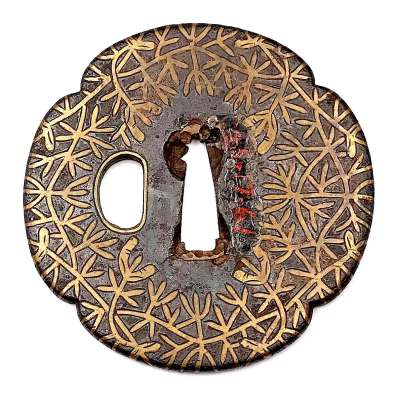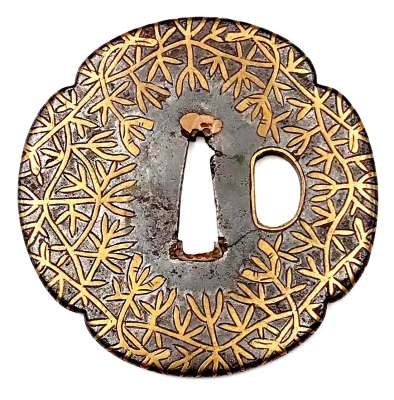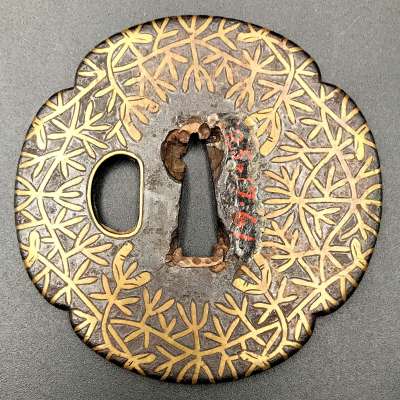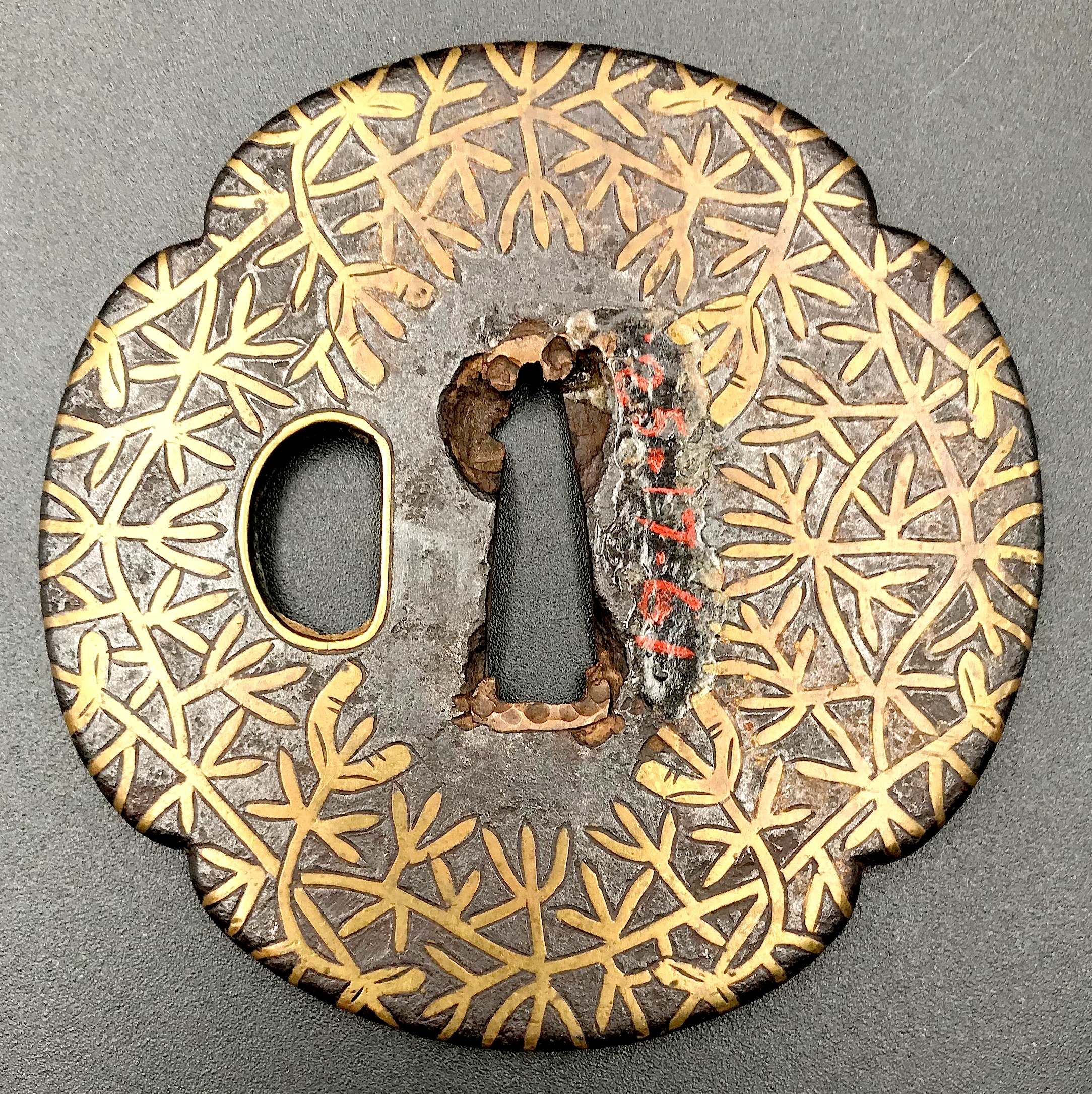Iron tsuba of mokko form decorated with brass flat inlay (hira-zōgan) all over on both sits and going over the rounded rim. Black patina, well-forged iron. Hitsu-ana outlined with brass inlay. Former owner’s catalogue number in red paint reads 25-17-61.
Gary D. Murtha provides detailed account of this type of tsuba in Japanese Sword Guards. Onin-Heianjo-Yoshiro book on pages 118-122. He calls this type of tsuba “Heianjo Mogusa Tsuba”:
“The term mogusa is commonly used for an inlay design that represents an aquatic weed, similar to a duck weed or sago plant, which is known to quickly invade and overtake bodies of water. […] Perhaps the visual image has some cross-over meaning for samurai in that, like the plant, a small aggressive samurai force could conquer a larger foe/area.”
I tried to find any reference to “mogusa” in literature, – to no avail. Neither on the vastness of internet, including Wikipedia… I did find the “duckweed” (one word), but visually it has nothing to do with the pattern on tsuba. “Sago plant” probably stands for ‘Sago palm”, and there is some very distant reminiscence in the construction of the sago palm leaf and the said design of inlay, but I would not go that far. In the old catalogues, such as Naunton and Hawkshaw collections, this pattern as called “sea weed” and/or “conventional fir”. I will stick to these descriptions, tested by the time, and leave the enigmatic “mogusa” alone.
Obviously, this type of tsuba has transformed into Yoshirō tsuba, both in Kaga province and Bizen province.
Momoyama period (ca. 1660).
Dimensions: 74.5 x 73.7 x 4.4 mm.












